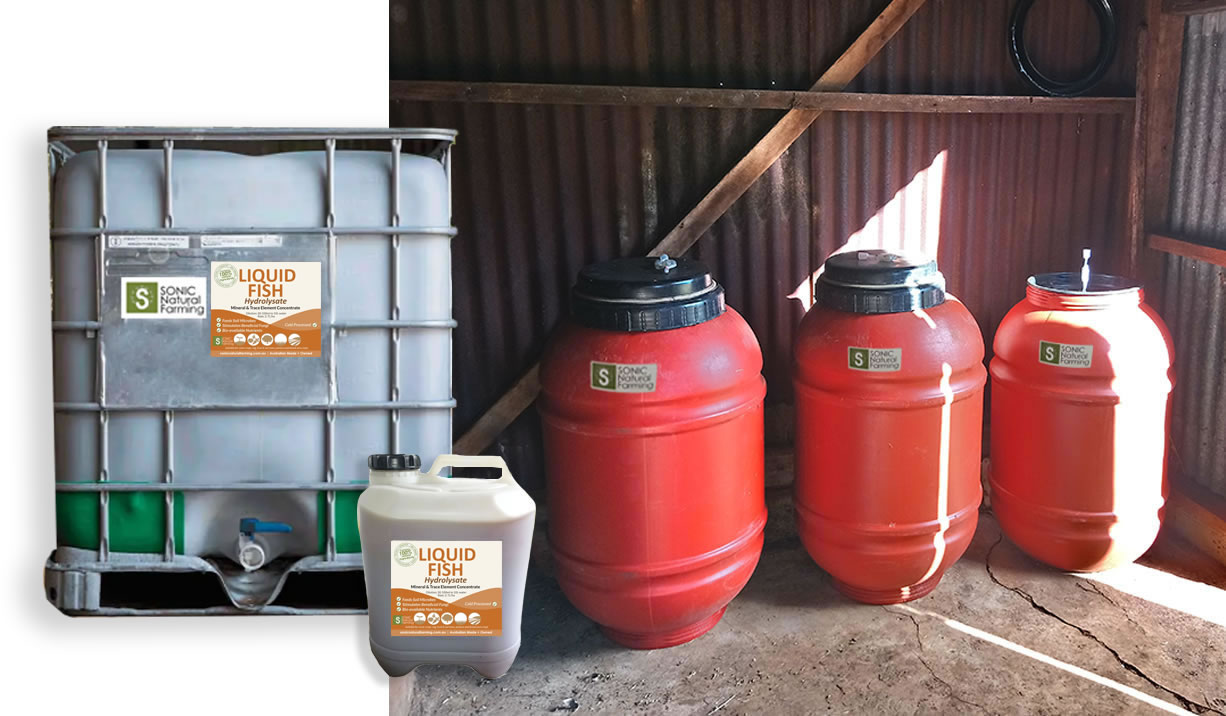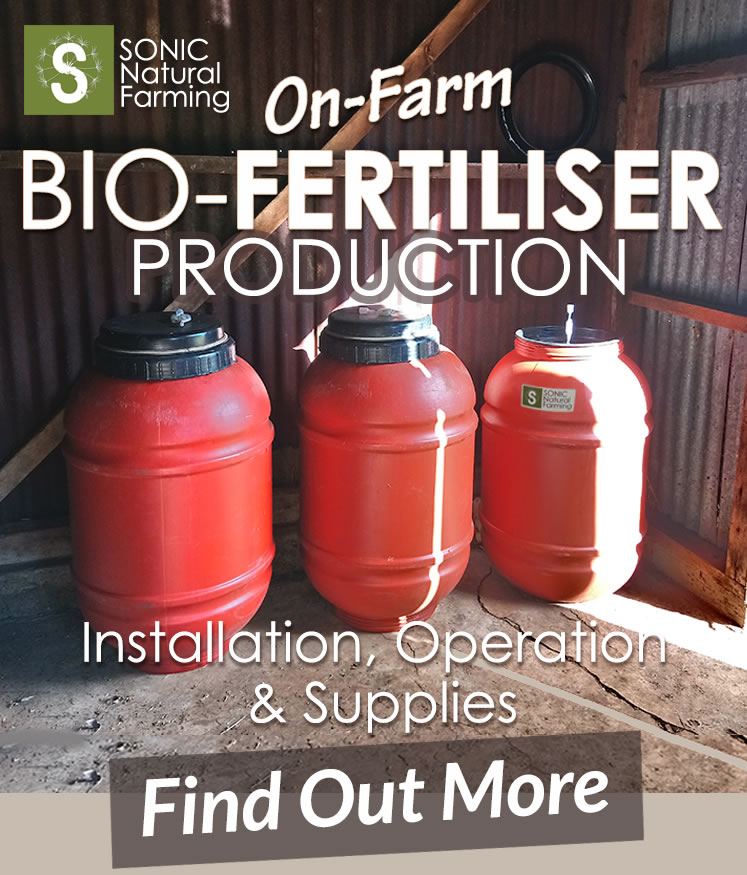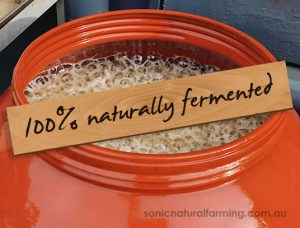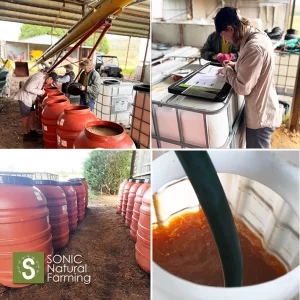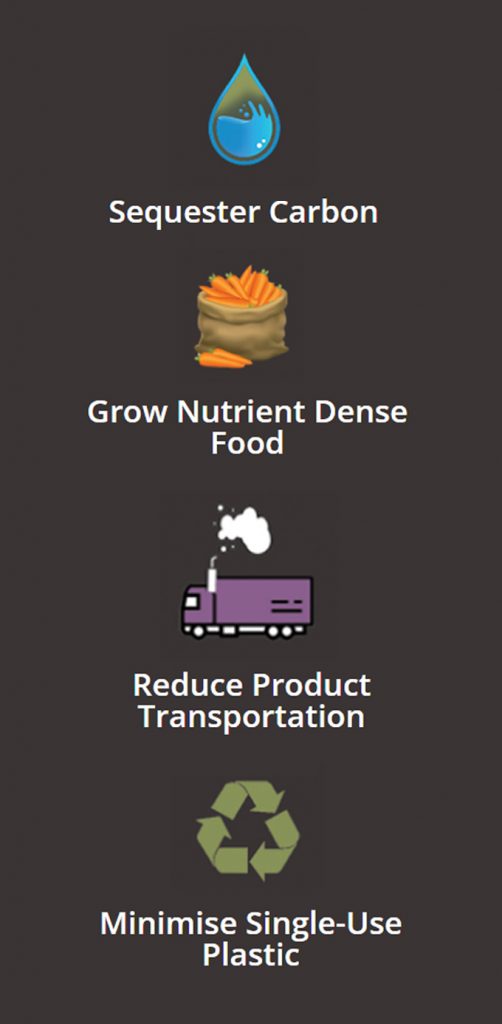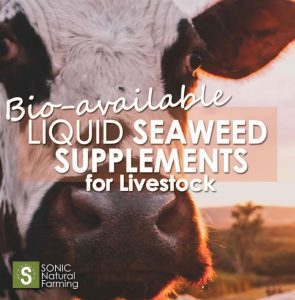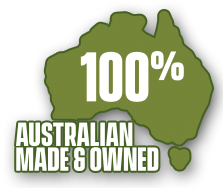Global Fish Consumption
Fish and marine products have long been recognized as one of the most popular sources of protein for human consumption. With their high nutritional value, fish provide essential nutrients such as omega-3 fatty acids, vitamins, and minerals.
Global fish capture and aquacultural production annually reaches the values of around 93.4 million tons. That means, if all fish globally are processed the leftover amount would be 36 million tons, available as raw material for further use.
Every year, a significant amount of fish discards end up in landfill. Many fish processing establishments have an additional financial burden for disposing of the fish dicards. And, some businesses are even required to pay for the disposal, further adding to their expenses.

Early morning fish (waste) pickup, from a local fish shop, by SONIC Natural Farming production operators, and taken to a nearby SONIC On-Farm Production System, to be processed into premium Liquid Fish Hydrolysate Fertiliser.
Australian Fish Waste Solutions
However, there is a solution that can address both the environmental and economic aspects of this issue – fish fertiliser.
In addition to being a valuable food source, fish also play a significant role in other industries. One such example is in agriculture.
Fish fertiliser is derived from the remains of fish, including discarded parts such as bones and offcuts. It can be processed into a nutrient-rich organic liquid fertiliser that can greatly benefit agricultural practices.
By repurposing fish waste into fertiliser instead of sending it to landfill, we can reduce waste and create a valuable resource for organic farming and regenerative agriculture.
Fish Has Been Used As An Effective Fertiliser, At Least As Early As 1620

Wide Spread Agricultural Uses Of Fish Fertiliser
Fish fertilisers contain various beneficial elements like nitrogen, phosphorus, potassium, and trace minerals that can improve soil structure and nutrient availability for plants. They are commonly used in organic farming practices as an alternative to synthetic nitrogen fertilisers.
The global market for fish-based fertilisers has witnessed steady growth due to increasing demand for organic products and sustainable agricultural practices. These fertilisers offer an eco-friendly solution by utilising waste from the fishing industry.
Furthermore, liquid fish fertiliser not only provides essential nutrients to plants but also enhances soil microbial activity, leading to improved plant health and increased crop yields. Its use can contribute to reducing reliance on chemical inputs while promoting environmentally friendly farming practices.

Infrastructure
Implementing proper systems and infrastructure for collecting and processing fish discards into fertiliser can contribute towards sustainable waste management practices in Australia. It presents an opportunity to turn what was once considered waste into a valuable resource that supports agricultural productivity while minimising environmental harm.
Fish has been used as a soil amendment, compost activator, and fertiliser for 1000’s of years. The native Americans used to bury fish near their trees as a fertiliser for them.
Making Fish Hydrolysate from fish discards, using natural fermentation methods, produces a premium liquid concentrate fertiliser, and is one of the best organic protein and nitrogen sources for plants and soil.
More about SONIC Liquid Fish Hydrolysate Fertiliser
Using liquid Fish Hydrolysate Fertiliser can provide numerous benefits for your crops and orchards. Let’s explore the top 5 advantages of incorporating this organic fertiliser into your spray routine.
1. Nutrient-rich: Liquid Fish Hydrolysate is a concentrated source of essential nutrients such as nitrogen, phosphorus, and potassium. These nutrients are crucial for the healthy growth and development of plants, promoting stronger roots, vibrant foliage, and abundant blooms.
2. Organic and sustainable: Fish Hydrolysate Fertiliser is derived from marine sources, making it an environmentally friendly choice. It is produced through a natural biologically fermented process that breaks down fish waste into a nutrient-dense liquid. This organic nature makes it safe to use around children, pets, and wildlife.
3. Improved soil health: The application of liquid Fish Hydrolysate can enhance soil fertility by replenishing important trace elements and micronutrients that may be lacking in the soil. It also helps improve soil structure by promoting microbial activity, increasing water retention capacity, and reducing nutrient leaching.
4. Increased plant resilience: Regular use of Fish Hydrolysate Fertiliser can strengthen plants’ immune systems, making them more resistant to diseases, pests, and environmental stressors such as drought or extreme temperatures. This leads to healthier plants that are better equipped to withstand adverse conditions.
5. Versatile application: Liquid Fish Hydrolysate can be used on various types of plants including vegetables, fruits, flowers, trees, and shrubs. It can be applied through foliar spraying or drenching the soil around the plants’ root zone. Its versatility allows for easy integration into different gardening practices.
In summary, using liquid Fish Hydrolysate Fertiliser offers several benefits including improved plant nutrition, organic sustainability, enhanced soil health, increased plant resilience, and versatile application methods.
By incorporating this natural fertiliser into your spraying routine, you can promote healthier plants and achieve more bountiful harvests.
Why is Cold Processing so Good?
Cold-processed liquid Fish Hydrolysate Fertiliser delivers bio-available nutrients and ‘living’ biology to plants and soil.
By fermenting the fish, using beneficial microorganism Starter Cultures, all the natural oils and amino chains stay intact, providing highly beneficial nutrients that contirbute to strong plant growth and natural plant immunity.
Capturing all the minerals, trace elements and amino chains, in a Fish Hydrolysate Fertiliser, is the key, and only a cold processing method of making liquid ‘hydrolysate’ fertiliser enables this.
Not only does naturally fermented Fish Hydrolysate offer an organic, highly nutritional fertiliser, it is packed with micronutrients, beneficial microorganisms, and helps to utilise fish waste.
SONIC Liquid Fish Hydrolysate Fertiliser is made using natural Starter Cultures that contribute to many soil health benefits, as well as producing an end product that has a non offensive, tangy fish smell.
By utilising natural starter cultures, this fish fertiliser goes beyond traditional methods, unlocking a plethora of soil health benefits. These cultures work in harmony with the environment, enriching the soil with vital minerals and organic matter that nourish plants from the roots up.
Gone are the days of relying solely on chemical-based fertilisers that harm both our crops and the environment. SONIC Liquid Fish Hydrolysate Fertiliser offers a greener alternative, ensuring that your farming practices align with nature’s wisdom.




